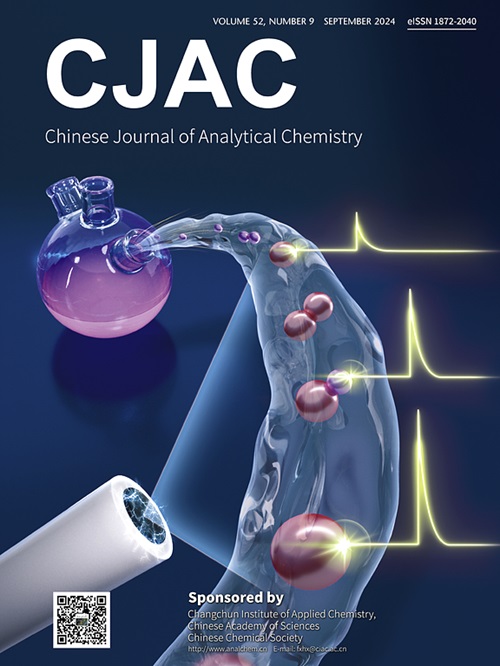UHPLC-MS/MS method for simultaneous determination of tacrolimus, Cyclosporine A, sirolimus and Everolimus in human blood and clinical application
IF 1.2
4区 化学
Q4 CHEMISTRY, ANALYTICAL
引用次数: 0
Abstract
The whole blood concentrations of Tacrolimus, Cyclosporine A, Sirolimus, and Everolimus are critical for managing organ transplant rejection, hypersensitivity reactions, and autoimmune diseases. Routine monitoring of these immunosuppressive drugs aids in dose adjustment and toxicity prevention. An ultra-high performance liquid chromatography-tandem mass spectrometry (UHPLC-MS/MS) method for simultaneous determination of whole blood Tacrolimus, Cyclosporine A, Sirolimus, and Everolimus was developed, validated, and applied in clinical samples. The ion transitions were m/z 821.5 > 768.4 for Tacrolimus, m/z 1219.7 > 1208.8 for Cyclosporine A, m/z 931.5 > 864.5 for Sirolimus, and m/z 975.6 > 908.4 for Everolimus. The flow rate was 0.6 mL/min with a run time of 3.5 min. The calibration ranges were 1.25–42.9 ng/mL for Tacrolimus, 21.7–1270 ng/mL for Cyclosporine A, 1.38–45.6 ng/mL for Sirolimus, and 1.22–44.6 ng/mL for Everolimus, respectively. The intra-day and inter-day inaccuracy and imprecision were within ±15 % for all analytes. Consistent internal standard -normalized recovery and minimal matrix effects were observed at all quality control levels. The UHPLC-MS/MS method offers significant advantages over traditional immunoassays and HPLC methods, including higher specificity, sensitivity, and the ability to detect multiple drugs simultaneously. It simplifies therapeutic drug monitoring (TDM) procedures, increases detection throughput, and supports optimizing immunosuppressive therapy and improving patient outcomes.

UHPLC-MS/MS法同时测定人血液中他克莫司、环孢素A、西罗莫司和依维莫司的含量及临床应用
他克莫司、环孢素A、西罗莫司和依维莫司的全血浓度对于控制器官移植排斥反应、超敏反应和自身免疫性疾病至关重要。这些免疫抑制药物的常规监测有助于剂量调整和毒性预防。建立了超高效液相色谱-串联质谱(UHPLC-MS/MS)同时测定全血他克莫司、环孢素A、西罗莫司和依维莫司的方法,并对其进行了验证,并在临床样品中应用。离子跃迁为m/z 821.5 >;768.4他克莫司,m/z 1219.7 >;1208.8环孢素A, m/z 931.5 >;西罗莫司为864.5,m/z 975.6 >;依维莫司908.4。流速0.6 mL/min,运行时间3.5 min。他克莫司的校准范围为1.25 ~ 42.9 ng/mL,环孢素a的校准范围为21.7 ~ 1270 ng/mL,西罗莫司的校准范围为1.38 ~ 45.6 ng/mL,依维莫司的校准范围为1.22 ~ 44.6 ng/mL。所有分析物的日间和日间不准确性和不精密度均在±15%以内。在所有质量控制水平上观察到一致的内标准标准化回收率和最小基质效应。UHPLC-MS/MS方法与传统的免疫分析和HPLC方法相比,具有更高的特异性、灵敏度和同时检测多种药物的能力。它简化了治疗药物监测(TDM)程序,提高了检测吞吐量,并支持优化免疫抑制治疗和改善患者预后。
本文章由计算机程序翻译,如有差异,请以英文原文为准。
求助全文
约1分钟内获得全文
求助全文
来源期刊
CiteScore
3.60
自引率
25.00%
发文量
17223
审稿时长
35 days
期刊介绍:
Chinese Journal of Analytical Chemistry(CJAC) is an academic journal of analytical chemistry established in 1972 and sponsored by the Chinese Chemical Society and Changchun Institute of Applied Chemistry, Chinese Academy of Sciences. Its objectives are to report the original scientific research achievements and review the recent development of analytical chemistry in all areas. The journal sets up 5 columns including Research Papers, Research Notes, Experimental Technique and Instrument, Review and Progress and Summary Accounts. The journal published monthly in Chinese language. A detailed abstract, keywords and the titles of figures and tables are provided in English, except column of Summary Accounts. Prof. Wang Erkang, an outstanding analytical chemist, academician of Chinese Academy of Sciences & Third World Academy of Sciences, holds the post of the Editor-in-chief.

 求助内容:
求助内容: 应助结果提醒方式:
应助结果提醒方式:


